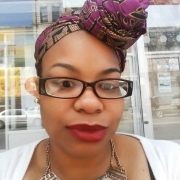NYU Metro Center’s Lessons in (In)Equity report, an analysis of the nation’s three most frequently used English Language Arts (ELA) curricula, remains highly relevant, particularly after a recent announcement by the Chancellor of the New York City Department of Education. Chancellor David Banks has instituted a new “reading mandate” that requires New York City’s elementary and middle schools to use one of three specific ELA curriculum, one of which is Houghton Mifflin Harcourt’s (HMH’s) Into Reading.
NYU Metro Center’s Lessons in (In)Equity Report found America’s three most popular ELA curricula (including HMH’s Into Reading) not to be culturally responsive, and in fact declared these materials to be “Culturally Destructive”. Researchers from the Education Justice Research and Organizing Collaborative (EJ-ROC) worked with a diverse team of public school parents, students and educators to analyze the curricula for the study. This community research team found that each of the three curricula used superficial visual representations to signify diversity, especially skin tone and bodily presentation, without including meaningful cultural context, practices or traditions. All three curricula were dominated by one-sided storytelling that provided a single, ahistorical narrative. Analysis by EJ-ROC researchers determined all three curricula used language, tone and syntax that demeaned and dehumanized Black, Indigenous, and characters of color, while encouraging empathy and connection with White characters.
The implementation of the NYCDOE’s new “Reading Mandate” will significantly impact NYC schools, which serves over one million students throughout the city's 5 boroughs, 85% of which are children of color. The New York Times and NY1 chronicled this systemic dilemma in recent news stories that mentioned the Lessons in (In)Equity report, and the concerns of educators who are alarmed by the report’s findings, which found Into Reading to be culturally destructive in reinforcing stereotypes, centering White or Eurocentric ideas or culture, and offering little guidance for teachers to connect curriculum to students’ lives. HMH’s Into Reading communicates harmful messages to students of all backgrounds, especially Black, Indigenous, students of color, LGBTQIA+ students, and students with disabilities.
Members of EJ-ROC’s community research team who evaluated Into Reading found that a first-grade curricula sample about the first day of school signaled diversity as solely phenotypic differences rather than intentionally integrating cultural ways of being, knowing and doing. One evaluator noted that “ambiguity is part of what makes young people feel so alienated from their culture because they feel they need to assimilate into that one dominant American culture.” In the report, this ambiguity is defined as Ambiguous Hostility, where superficial cultural markers are visible, but significant cultural markers are absent. Evaluators noticed across curricula that characters of color were often largely disconnected from languages, cultural practices, belief systems, ways of thinking and being; but, White characters were described together with their political perspectives, values, and morals.
“There is a common misconception that diversity and inclusion mean tossing in a Black or Brown character into a storyline and saying, ‘Okay, we’ve done our part.’ Similarly, districts want to swap out one lesson plan for another and see this as the quick and easy solution,” said Flor Khan, who led research for the Lessons in (In)Equity report as the National Campaign Researcher at NYU Metro Center.

“Culturally Responsive Education is a deep, intentional path towards our students seeing themselves in the texts they are reading and having their identities be affirmed in a positive and meaningful way. When curriculum companies, like HMH, fail to make this effort, they rob our children of the opportunity to make real-life connections and see themselves as tinkerers, change makers, and vital contributors to our society.”
Multiple studies, including from Stanford University, have shown that culturally responsive education increases student academic engagement, attendance, grade point averages, graduation rates, and positive self-definition for students of color as well as White students.

“Culturally responsive education is beneficial for all schools and all students. It imparts empathy and core critical thinking skills that are necessary for children to thrive as adults and not repeat the harms of the past,” said Natasha Capers, who is the Director of NYC Coalition for Educational Justice (CEJ). “Specifically for New York City, where 8 out of 10 students are children of color, it is imperative to teach culturally responsive curricula so all students can explore who they are and who they will become, as well as the world around them. This is possible when we tell stories that are truthful and complex with multiple points of view."
Capers, along with Black and Latinx parent leaders in CEJ, catalyzed the creation of the Culturally Responsive Scorecard in 2016 when they asked NYU Metro Center for a tool to assess the cultural responsiveness of their children’s curriculum. Since then, the scorecard has been used by hundreds of schools and districts across the U.S. and internationally. There is now a new version of the Culturally Responsive Scorecard with a stronger emphasis on community participation and centering other identities in addition to race and ethnicity. The scorecard includes more guidance and language around ability and multilingual learning as well as meaningful representation of Latinx, non-binary, and transgender communities.
Through NYU Metro Center’s Advocacy Toolkit, created in partnership with HEAL Together, community members now have step-by-step guidance on how to advocate for culturally responsive education using the scorecard and the Lessons in (In)Equity report. NYU Metro Center is committed to uplifting education that centers the cultural contexts of diverse students.

